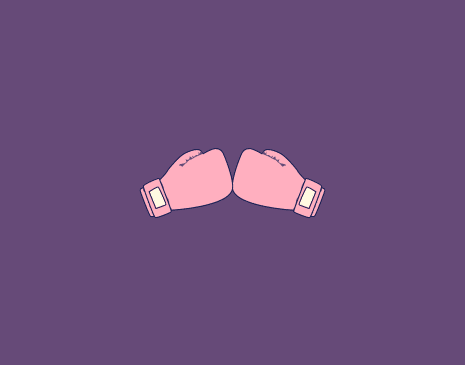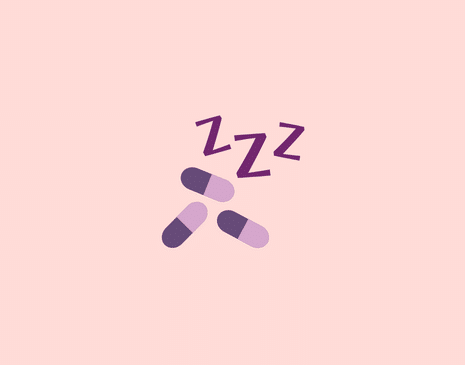Bacterial Vaginosis (BV) and thrush, or vaginal candidiasis, are two common but different vaginal infections. BV is caused by too much of a certain bacteria in the vagina, leading to symptoms like a fishy smell and greyish discharge.¹ Thrush is a yeast infection caused by too much candida yeast, resulting in a thick, white discharge and a lot of itching.² Knowing the difference between the two is important for the right treatment.
This article explains the key differences between bacterial vaginosis and thrush. You’ll learn what causes them, how to spot their symptoms, and the best ways to treat and prevent them. It’s a straightforward guide to help you understand two common vaginal infections and take care of your health.
BV vs Thrush: Key Variations
Let’s break it down in simple terms:
What Causes Them
Bacterial Vaginosis: BV is a bacterial infection that happens when there’s too much of certain bacteria in the vagina. It’s like the natural balance gets thrown off.¹
Thrush: Thrush is a yeast infection. The exact cause of bacterial vaginosis is not known. It is thought to happen when there is an overgrowth of bacteria that live naturally in the vagina.²
What They Feel Like
Bacterial Vaginosis: You might notice a watery vaginal discharge that’s thin, greyish in colour and fishy in odour, especially after sexual intercourse. Sometimes, bacterial vaginosis symptoms also include a burning sensation when you pee, but usually not vaginal itchiness.
Thrush: This one also has an unusual vaginal discharge. Think thick, white discharge resembling cottage cheese. It’s super itchy, and you might feel sore and red down there. It can hurt during sexual intercourse and when you urinate.
pH Levels
Bacterial Vaginosis: It makes your vaginal pH go higher than 4.5.
Thrush: Your pH stays normal, between 3.8 and 4.5.
What Increases Your Risk
Bacterial Vaginosis: Having multiple sexual partners, a new sex partner, over-cleaning your vagina, or having BV before.
Thrush: Taking antibiotics, being pregnant, having uncontrolled diabetes, a weak immune system, hormonal shifts, or using certain birth controls.
How to Treat Them
Bacterial Vaginosis: You can treat BV with antibiotics – as oral tablets, or a vaginal antibiotic cream or gel.¹
Thrush: Treatment for vaginal thrush is usually an antifungal tablet, cream or pessary (a tablet you insert into the vagina). You can buy these over-the-counter in a pharmacy.²
Possible Problems if Untreated
Bacterial Vaginosis: This can lead to other infections, issues during pregnancy, and pelvic inflammatory disease.
Thrush: Usually not too serious, but if it keeps returning or is really bad, it might point to other health issues like diabetes or a weak immune system.
It’s important to know which vaginal infection you’re dealing with to get the right treatment. So, if you’re having symptoms, chat with a healthcare provider sooner rather than later.
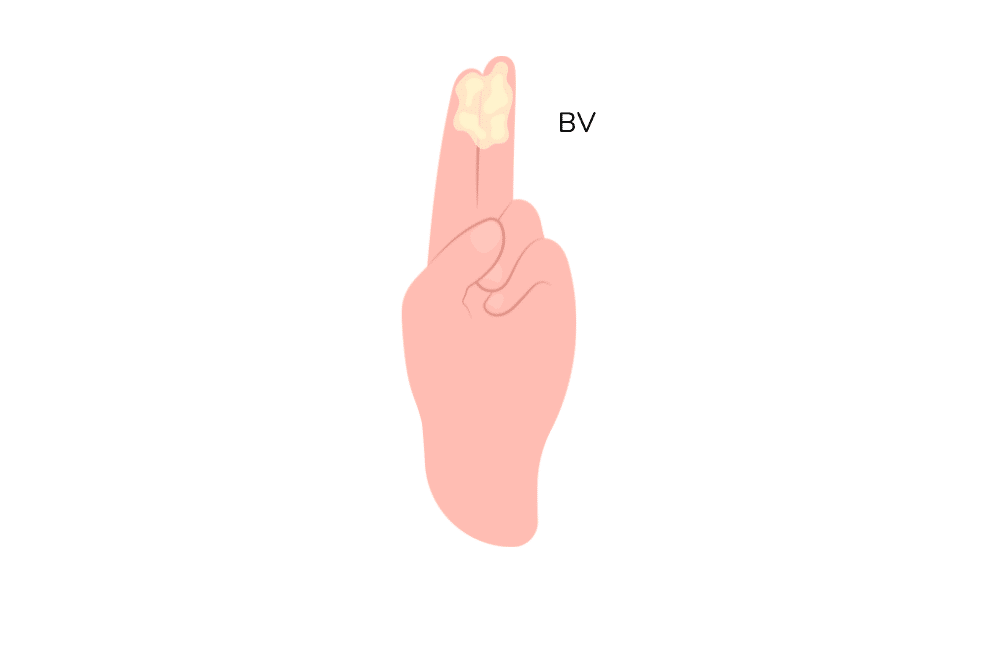
BV vs Thrush: Causes and Symptoms
Causes
The Cause of Bacterial Vaginosis: It’s all about bacterial imbalance. BV is triggered when the usual mix of bacteria in your vagina goes off-kilter, leading to an overgrowth of certain types of bacteria.¹
The Cause of Thrush: This one’s a yeast issue, specifically an overgrowth of Candida yeast. It’s a common inhabitant of your vagina, but sometimes it gets a bit too enthusiastic and grows more than it should.²
Symptoms
BV Symptoms to Watch For: The tell-tale sign of BV is a thin, greyish vaginal discharge. It often comes with a distinct, fishy odour, which can be more noticeable after sex.¹ Some women might experience a bit of burning while peeing, but itching isn’t a common symptom of BV.
Thrush Symptoms to Watch For: The main giveaway of vaginal yeast infections is a thick, white discharge that looks a lot like cottage cheese. This can be accompanied by serious itching, redness, and irritation around the vagina. It can also be painful during sex and when you’re peeing.² Can you have sex with thrush?
Knowing these differences in causes and symptoms is key to figuring out if you’re dealing with BV or Thrush. Both conditions are common but require different treatments, so it’s always a good idea to consult a healthcare professional for a proper diagnosis and treatment plan.
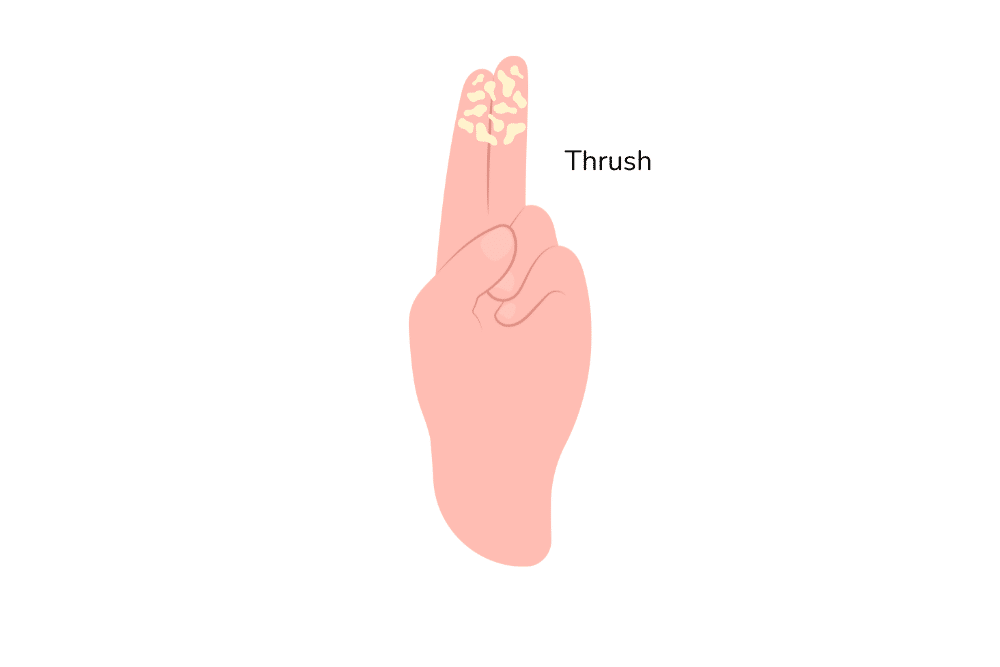
Diagnosing BV & Thrush
Diagnosing BV and thrush typically involves a visit to your healthcare provider. For BV, the process usually includes a pelvic examination during which a sample of vaginal discharge is collected. This sample is then tested for pH levels and the presence of certain bacteria to confirm BV. Sometimes, a whiff test is performed, where a substance is added to the sample to check for the characteristic fishy or unpleasant odour of BV.
Thrush diagnosis is often simpler. Your doctor might need to look at your symptoms, like the unique cottage cheese-like discharge and severe itching. In some cases, a small sample of vaginal discharge might be examined under a microscope to spot the yeast cells typical of thrush.
In both cases, accurately identifying the condition is essential since the treatments for thrush and BV differ. Prompt and proper diagnosis ensures you get the right treatment quickly, relieving symptoms and preventing complications.

Treatment Options for BV and Thrush
Treatment for Bacterial Vaginosis (BV)
Antibiotics: The primary treatment for BV involves antibiotics typically prescribed by a healthcare provider. They come in various forms, such as oral pills or topical creams.¹ The treatment duration might vary depending on the severity of the infection.
Lifestyle Changes: Alongside medical treatment, certain lifestyle changes can help manage and prevent BV. This includes practices like maintaining good genital hygiene, avoiding douching, and using protection during sexual activities.
Treatment for Thrush (Yeast Infection)
Antifungal Treatments: Thrush is generally treated with antifungal medications. These can be administered orally or applied topically in the form of creams or suppositories.² The choice of treatment depends on the severity and frequency of the infections.
Home Care and Lifestyle Adjustments: To complement medical treatment, it’s also advised to wear loose-fitting, breathable clothing and to maintain good genital hygiene. Avoiding scented products that can irritate the vaginal area can also be helpful.
For most common vaginal infections, it’s essential to complete the full course of treatment even if symptoms improve earlier. This ensures the infection is fully cleared and helps prevent recurrence. It’s always best to consult a healthcare provider for a personalised treatment plan, as self-diagnosis and treatment might not always be accurate or effective.
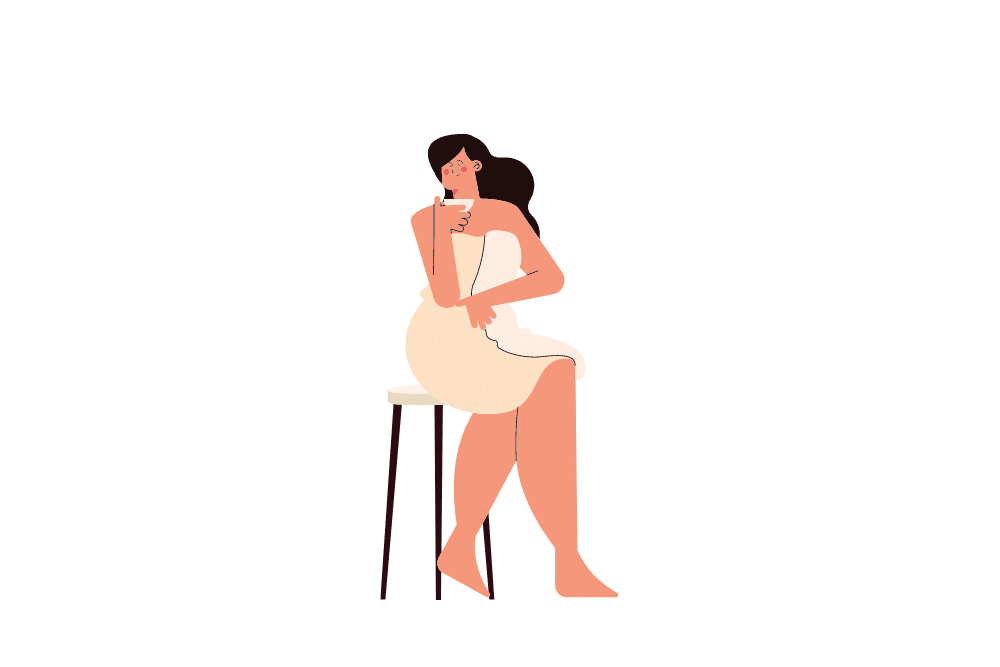
Preventing BV and Thrush
Bacterial vaginosis and thrush prevention involve a combination of good hygiene practices and lifestyle adjustments, although their specific causes differ.
Preventing BV
Maintain Vaginal Balance: Avoid practices that disrupt the natural balance of bacteria in the vagina. This includes avoiding douching and limiting the use of scented products like soaps, bubble baths, and vaginal deodorants.
Safe Sexual Practices: Using condoms during sexual activity can reduce the risk of developing BV, as it helps maintain the natural bacterial balance.
Good Hygiene: Regular bathing and wearing clean, breathable underwear can help prevent BV. Wiping from front to back after using the bathroom is also recommended to avoid spreading bacteria.
Preventing Thrush
Control Moisture: Thrush thrives in moist environments, so keeping the genital area dry is key. Opt for breathable, cotton underwear and avoid tight-fitting clothes that can increase moisture and warmth in the vaginal area.
Avoid Irritants: Steer clear of scented products like soaps, bath additives, and laundry detergents that can irritate the vagina and potentially contribute to a yeast imbalance.
Diet and Health Maintenance: For some, maintaining a balanced diet and controlling blood sugar levels can help prevent the overgrowth of yeast. This is particularly relevant for individuals with diabetes.
Both conditions benefit from a healthy lifestyle, including a balanced diet and regular exercise, which can support overall immune function. It’s important to note that while these practices can reduce the risk, they do not guarantee prevention. If symptoms of BV or Thrush occur, it’s advisable to consult a healthcare provider for appropriate treatment.

BV and Thrush: Recurrence and Complications
Recurrence of BV and Thrush
Both bacterial vaginosis and thrush can recur, sometimes frequently, which can be frustrating and uncomfortable. Recurrence of BV is especially common, with many women experiencing repeat episodes within a few months of treatment. For Thrush, recurrent infections can occur, often triggered by certain lifestyle factors, hormonal changes, or health conditions. To manage and reduce the risk of recurrence, it’s important to follow treatment instructions carefully, make the recommended lifestyle adjustments, and identify and address any underlying factors contributing to recurrent infections.
Complications of BV and Thrush
If left untreated or not properly managed, BV and thrush can lead to further complications. For BV, these include an increased risk of sexually transmitted infections, pelvic inflammatory disease, and complications during pregnancy, such as preterm birth. Chronic or severe thrush, while generally not leading to serious medical complications, can cause significant discomfort and impact the quality of life. In some cases, persistent thrush may be a sign of an underlying health issue, like diabetes or a compromised immune system, which requires medical attention. Regular follow-ups and proactive management are key to preventing these complications and ensuring overall reproductive health.
Getting Help for BV or Thrush
If you think you might have BV thrush, it’s really important to see a doctor instead of trying to figure it out yourself. These conditions can look like other health issues, so getting the right diagnosis is key to getting better. Your doctor can tell you what’s going on and prescribe the right treatment. If you keep getting BV or thrush, or if treatments aren’t working, consult your doctor to find out why and to avoid more serious problems. Getting checked out and staying on top of your health is always best.
Sources
- Australia H. Bacterial vaginosis [Internet]. www.healthdirect.gov.au. 2020. Available from: https://www.healthdirect.gov.au/bacterial-vaginosis
- Australia H. Vaginal thrush [Internet]. www.healthdirect.gov.au. 2020. Available from: https://www.healthdirect.gov.au/vaginal-thrush

